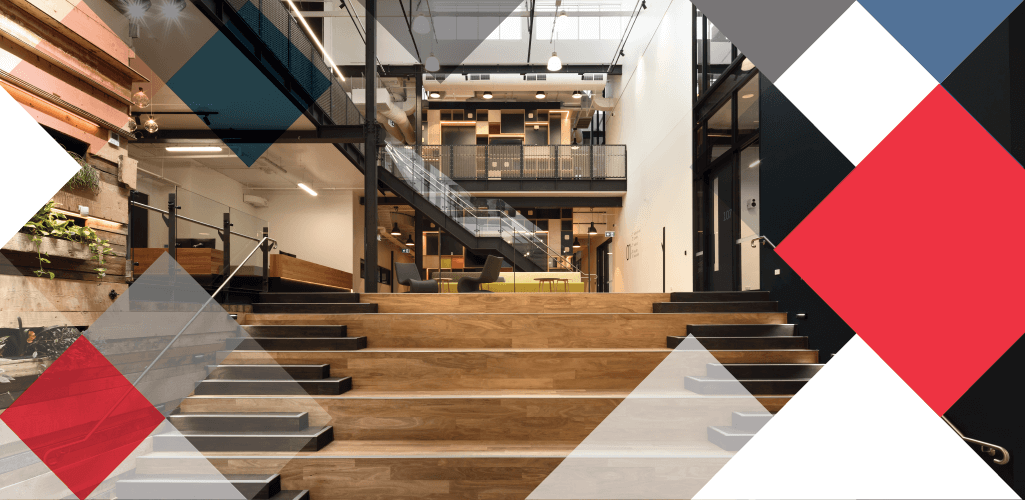LCI Melbourne’s New Campus Revealed

Prized Melbourne icon, Collingwood’s 130 year old Foy & Gibson woollen mill, is making a new name for itself. Its contemporary new doors have swung open to hundreds of creative types for classes and events at the newest campus of an internationally renowned design school network. In doing so, the site becomes once again a focal point for local makers, now of a different kind...
If you were a late 19th century Victorian trendsetter in the heady decades immediately following the gold-rush era, chances are you hopped off a cable-tram on Collingwood’s Smith Street to shop at Foy & Gibson’s emporium.
If you left with a shirt, or hat, or an order for a new piece of furniture, it’s likely that these quality wares came from a little way up the road – the Foy & Gibson factory complex.
Since its construction began in 1887, designed by architect William Pitt, the Foy & Gibson factory site has dominated its inner-suburban block, bounded by Collingwood’s Stanley, Wellington, Peel and Little Oxford streets.
Back in its heyday, more than 2,000 Melbourne ‘makers’ worked at Foy & Gibson – at every stage of the production process, from spinning, to dispatch and delivery. They made men’s and ladies’ clothing, millinery, furniture, hardware and bedding, which were delivered to homes across the city, initially with horse-drawn carts.
These red-bricked walls that watched Melbourne grow up over a century are now nurturing a new generation of makers. With a multi-million-dollar investment from the Canadian-founded LCI Education network, one of the original Foy & Gibson factories has been transformed into LCI Melbourne - a purpose-built creative campus for hundreds of students enrolled in a Bachelor of Design Arts.
Melbourne-based architects, Gray Puksand, kept connectivity at the heart of a sensitive design for the heritage site’s restoration - successfully joining two buildings over two floors, and using space intelligently to integrate the students of six design disciplines.
“The existing heritage buildings have amazing bones, great volumes of space and multiple levels. We wanted all aspects to seamlessly connect to each other, so we opened up the space with an atrium that delivers visual connectivity from the lowest gallery space up to the saw-tooth-roof of the second floor,” said Kelly Wellington, Senior Associate at Gray Puksand and the lead architect for the project.
From factory floor, to creative hub, the building now features a light-filled atrium, a contemporary art gallery and a range of modern learning spaces where a new generation of trend-setters can begin to make their mark.
“This connectivity is about more than showing off the unique building – it’s also essential in creating an environment that inspires creativity and collaboration for students in their day-to-day learning.
“The building acts as a canvas for display of student works and sharing of ideas. It’s also designed so each teaching space has the ability to adapt and connect studio and seminar space.
“But the spaces in between are as important as the teaching spaces themselves, with different break-out settings and working spaces for students to work together.
“It means people studying different streams of design – graphic design, communication design, interior design, fashion, or photography and film – can incidentally or purposefully connect with each other, fostering new ideas, and new collaborations,” Ms Wellington explained.